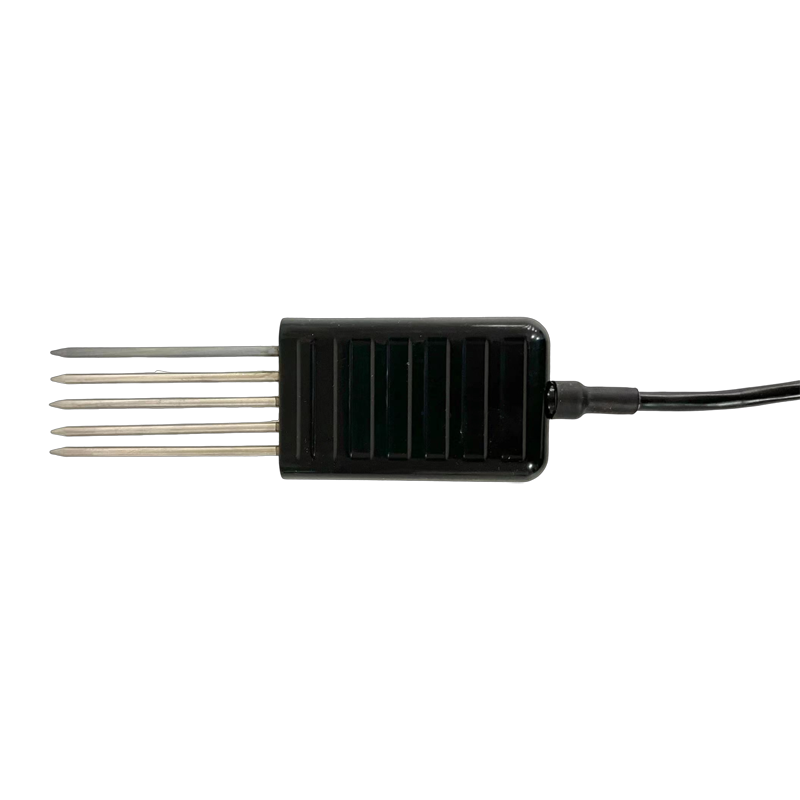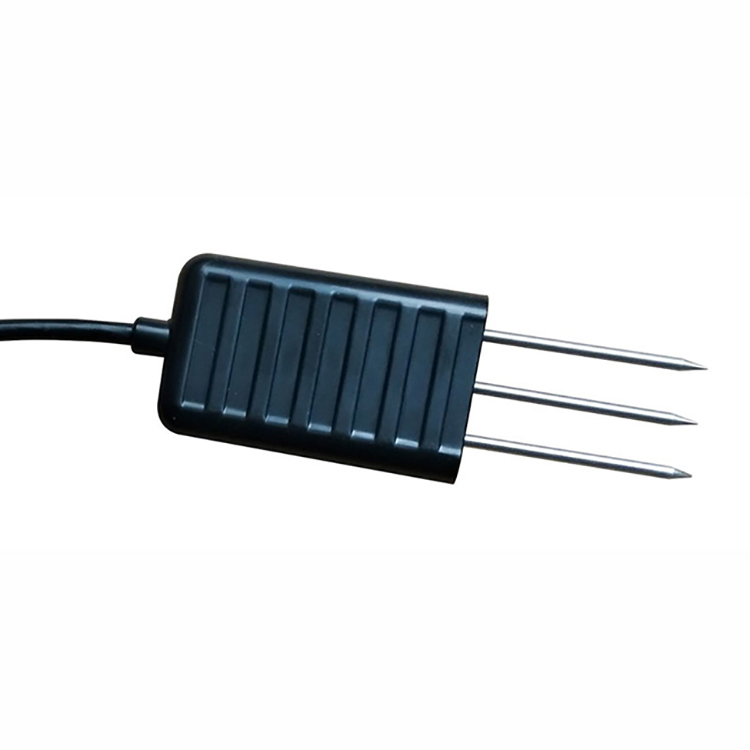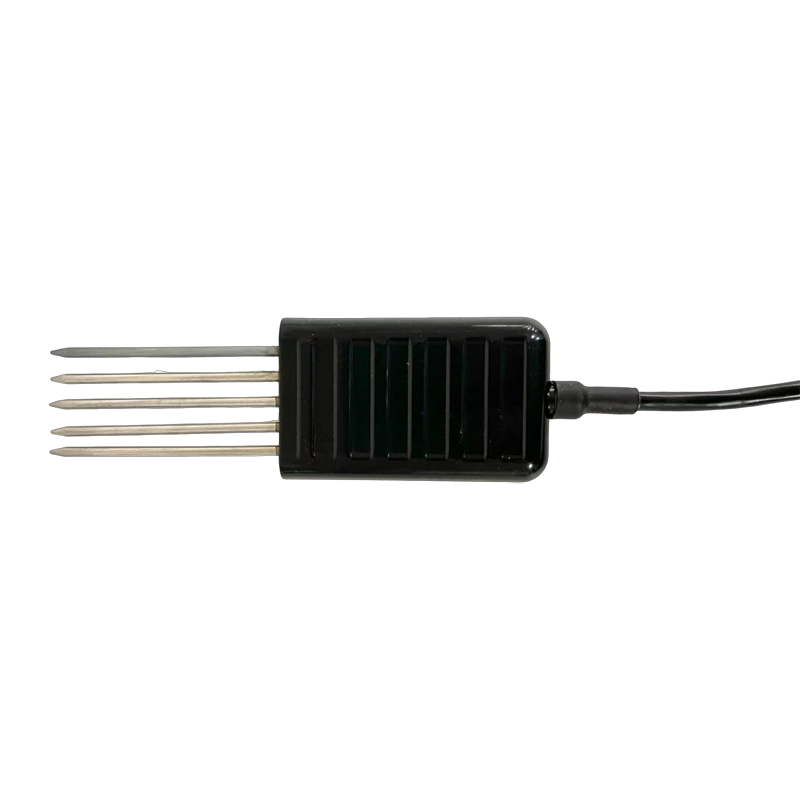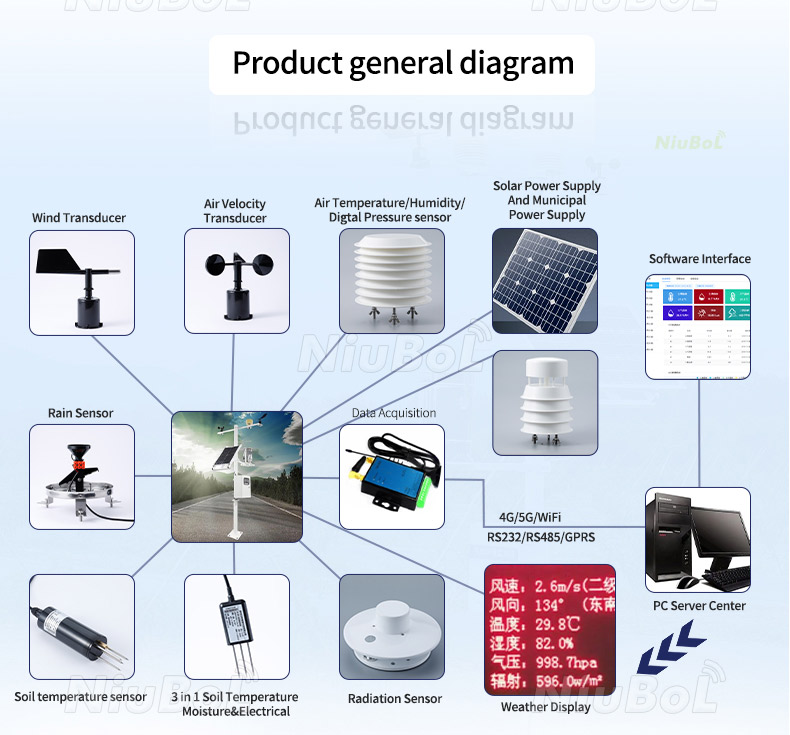

— Blogs —
—Products—
 Consumer hotline +8618073152920
Consumer hotline +8618073152920 WhatsApp:+8615367865107
Address:Room 102, District D, Houhu Industrial Park, Yuelu District, Changsha City, Hunan Province, China
Product knowledge
Time:2024-08-25 15:23:18 Popularity:3739
Soil sensors are devices that are used to monitor and measure specific characteristics of the soil. They are equipped with sensors and technology that collect data on soil conditions, which is essential for effective soil management. These sensors are able to provide comprehensive soil information for areas such as agriculture, horticulture and environmental monitoring. By monitoring soil metrics in real time, soil sensors can help increase crop yields, optimize irrigation schemes, and improve the soil environment. In this article, we'll look at seven basic types of soil sensors, their functions and the benefits they provide.
 |  |  |  |
| Soil NPK Sensor | Soil Moisture Temperature sensor | 7 in 1 Soil Integrated Sensor | 3-in-1 Soil Temperature Humidity EC Sensor |
 |  |  |  |
| Soil pH sensor | Soil EC Sensor | 4-in-1 Soil Temperature Moisture EC Salt Sensor | 8 in 1 Integrated Soil Sensor RS485 |
- Function: Measures soil temperature.
- Soil temperature sensors work: Based on temperature-sensitive components such as thermistors, they respond to changes in soil temperature. These sensors help determine the best time to plant seeds, irrigate and fertilize, ensuring that plants grow in the optimum temperature range.
- Value: Soil temperature affects seed germination, plant growth and nutrient effectiveness. By monitoring soil temperatures and thus adjusting planting regimens, farmers can determine optimal planting times and manage crops more effectively to maximize growth and yield.
- Function: Measures soil moisture content.
- Soil Moisture Sensors Working Principle: Measure the moisture content in soil by utilizing the relationship between soil dielectric constant and moisture content.
- Function and Value: Accurate moisture readings help manage irrigation systems to prevent overwatering or underwatering. This ensures that plants receive the right amount of water, which is essential for healthy growth and optimal crop yields.
- Function: Measures the electrical conductivity of the soil.
- Soil Electrical Conductivity (EC) Sensor Working Principle:Reflects the electrical conductivity of the soil by measuring the concentration of ions in the soil solution.
-Value: Soil EC indicates the concentration of soluble salts in the soil and can be related to soil fertility and salinity. This information is critical for assessing soil health and guiding fertilization practices to avoid nutrient imbalances and salinity problems.
- Function: Measures the acidity or alkalinity of the soil.
- Soil pH Sensor Working Principle: Using an ion-selective electrode, it measures the concentration of hydrogen ions in the soil to determine the acidity or alkalinity of the soil.
- Role and value: Soil pH affects nutrient effectiveness and microbial activity. Regular monitoring of pH helps to adjust soil treatments to ensure that plants can effectively absorb nutrients and thrive in their growing environment.
- Function:Measures the concentration of salt in the soil.
- Value:High salt levels can lead to soil degradation and reduced crop yields. Salinity sensors help manage and minimize salt buildup, which is critical to maintaining soil health and productivity.
- Function:Measures the water retention or tension of the soil.
- Soil Tensiometer Working Principle: A porous ceramic cup filled with water is used; as soil moisture changes, the tension in the water changes, and soil moisture levels are determined by measuring the tension.
- Value: The sensor evaluates the soil's ability to hold water, indicating how much water the plant needs. Understanding soil tension helps fine-tune irrigation practices to prevent water stress and optimize plant growth.
- Function: Measures the amount of nitrogen (N), phosphorus (P) and potassium (K) in the soil.
- Value: These three nutrients are vital for plant growth. By monitoring Nitrogen, Phosphorus and Potassium levels, farmers can apply the right amount of fertilizer to improve plant health and maximize crop yields.

Soil sensor data can be obtained in a variety of ways, including.
Direct Readout:Some sensors provide instant data via a digital display on the device.
Data loggers: Sensors can be connected to data loggers that record and store measurement data for later analysis.
Wireless systems: Many modern sensors transmit data wirelessly to a centralized system or mobile application, enabling real-time monitoring and remote management.
Integrated platforms:Some agricultural management systems integrate multiple sensors to provide a comprehensive overview of soil conditions through a single interface.
1. Data Transmission: The data collected by the sensors is transmitted in real time to a receiving device (cloud platform or server) via a wireless transmission module or by wired means.
2. Data reading: The data stored by the sensor is read periodically using a data collector.
3. cloud platform: the sensor is connected to the internet and the data is viewed and analyzed in real time through the cloud platform.
Farmers and researchers can access this data for analysis and decision-making through mobile apps or computer interfaces. This instant feedback mechanism makes agricultural management more scientific and personalized, thus increasing crop yields and reducing costs while protecting the environment.
Conclusion
As an important tool for modern agriculture and environmental monitoring, soil sensors play an important role in the fields of precision agriculture, water-saving irrigation, soil improvement and environmental protection by providing comprehensive and accurate soil information. By providing detailed information about soil temperature, moisture, conductivity, pH, salinity, tension and nutrient levels, these sensors enable precise soil management practices. This helps to improve crop health, optimize resource use and sustainable land management, which ultimately helps to improve agricultural outcomes and protect the environment.
As technology advances, these sensors will become more precise and cost-effective, becoming an integral part of the future of smart agriculture. Driven by accurate data, we can realize the fine management of every inch of land and promote a green revolution in agriculture.
Related recommendations
Sensors & Weather Stations Catalog
Agriculture Sensors and Weather Stations Catalog-NiuBoL.pdf
Weather Stations Catalog-NiuBoL.pdf
Related products
 Combined air temperature and relative humidity sensor
Combined air temperature and relative humidity sensor Soil Moisture Temperature sensor for irrigation
Soil Moisture Temperature sensor for irrigation Soil pH sensor RS485 soil Testing instrument soil ph meter for agriculture
Soil pH sensor RS485 soil Testing instrument soil ph meter for agriculture Wind Speed sensor Output Modbus/RS485/Analog/0-5V/4-20mA
Wind Speed sensor Output Modbus/RS485/Analog/0-5V/4-20mA Tipping bucket rain gauge for weather monitoring auto rainfall sensor RS485/Outdoor/stainless steel
Tipping bucket rain gauge for weather monitoring auto rainfall sensor RS485/Outdoor/stainless steel Pyranometer Solar Radiation Sensor 4-20mA/RS485
Pyranometer Solar Radiation Sensor 4-20mA/RS485
Screenshot, WhatsApp to identify the QR code
WhatsApp number:+8615367865107
(Click on WhatsApp to copy and add friends)
